Government Agencies
The following federal agencies are responsible for balancing horses and burros with natural resource management, biodiversity, national security, and other multiple uses on public lands.
Bureau of Land Management (BLM)
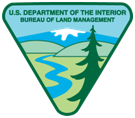
The BLM protects, manages, and controls wild horses and burros under the authority of the Wild Free-Roaming Horses and Burros Act of 1971 to ensure that healthy herds thrive on healthy rangelands.
To do this, the BLM works to achieve what is known as the Appropriate Management Level (AML) – the point at which horse and burro populations remain in balance with other public land uses and resources, including vegetation, wildlife, and livestock grazing.
The BLM is responsible for protecting the health and welfare of horses and burros on the range; during the gather and removal process; through the adoption or sale programs; and for the remainder of the horse or burro's life in holding facilities.
The BLM uses science in its efforts to ensure that viable numbers of horses and burros can thrive on healthy public rangelands. For example, the BLM uses science to monitor rangeland conditions such as vegetation, soils, water, wildlife, and wildfire. The agency also has partnered with the U.S. Geological Survey to improve its annual census of horses and burros. The BLM is working to develop fertility control techniques to reduce the overpopulation of horses and burros on public lands. Research is underway regarding longer-term, more effective vaccines, managing herd sex-ratios, sterilization options, and other means of reducing reproduction.
To do this, the BLM works to achieve what is known as the Appropriate Management Level (AML) – the point at which horse and burro populations remain in balance with other public land uses and resources, including vegetation, wildlife, and livestock grazing.
The BLM is responsible for protecting the health and welfare of horses and burros on the range; during the gather and removal process; through the adoption or sale programs; and for the remainder of the horse or burro's life in holding facilities.
The BLM uses science in its efforts to ensure that viable numbers of horses and burros can thrive on healthy public rangelands. For example, the BLM uses science to monitor rangeland conditions such as vegetation, soils, water, wildlife, and wildfire. The agency also has partnered with the U.S. Geological Survey to improve its annual census of horses and burros. The BLM is working to develop fertility control techniques to reduce the overpopulation of horses and burros on public lands. Research is underway regarding longer-term, more effective vaccines, managing herd sex-ratios, sterilization options, and other means of reducing reproduction.
U.S. Forest Service (USFS)
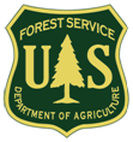
The U.S. Forest Service, by authority of the Secretary of Agriculture, is responsible for managing wild horses and burros on National Forest System lands. The Forest Service administers 37 wild horse or burro territories.
The Forest Service’s primary responsibilities are: to protect wild horses and burros from capture, branding, harassment, or death; manage horses and burros in a way that achieves and maintains a natural ecological balance on the land; maintain an inventory of horses and burros on National Forest System lands; remove excess horses and burros from the range to meet the AML; and transfer title one year after adoption to individuals who have given proper and humane care to their adopted horses or burros removed from public rangelands.
The Forest Service’s primary responsibilities are: to protect wild horses and burros from capture, branding, harassment, or death; manage horses and burros in a way that achieves and maintains a natural ecological balance on the land; maintain an inventory of horses and burros on National Forest System lands; remove excess horses and burros from the range to meet the AML; and transfer title one year after adoption to individuals who have given proper and humane care to their adopted horses or burros removed from public rangelands.
National Park Service (NPS)
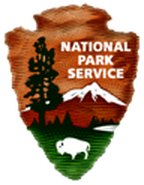
National Park Service (NPS) is a bureau of the U.S. Department of the Interior that manages the 400+ units of the National Park System with the purpose of conserving the scenery, natural and historic objects, and wildlife within these areas. The management of non-native species on park lands at local and national levels has become an important aspect of their mission to conserve the integrity of the parks.
NPS manages small herds of horses on Federal Park Land. These are not, however, “wild and free-roaming” horses as defined by the Act. They are generally located on smaller areas that are contained by physical barriers, and therefore, are more easily managed. Some examples of such areas are the NPS’ Assateague Island National Seashore and Shackleford Banks, the southern-most barrier island in Cape Lookout National Seashore. NPS manages these horses differently depending on the park. At some parks, NPS personnel manage the horses present by giving mares birth control annually and by removing some young horses for adoption.
NPS manages small herds of horses on Federal Park Land. These are not, however, “wild and free-roaming” horses as defined by the Act. They are generally located on smaller areas that are contained by physical barriers, and therefore, are more easily managed. Some examples of such areas are the NPS’ Assateague Island National Seashore and Shackleford Banks, the southern-most barrier island in Cape Lookout National Seashore. NPS manages these horses differently depending on the park. At some parks, NPS personnel manage the horses present by giving mares birth control annually and by removing some young horses for adoption.
U.S. Fish and Wildlife Services’ National Wildlife Refuge System (NWRS)
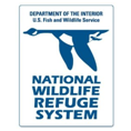
U.S. Fish and Wildlife Service (FWS) partners with outside entities to manage small herds of horses on a limited number of National Wildlife Refuges. The National Wildlife Refuge System is a system of public lands and waters set aside to conserve native fish, wildlife and plants. As such, management and maintenance of non-native and potentially harmful populations of any species is not a Congressionally mandated role of FWS. The Service’s management actions include horse and burro gathers and adoption programs to move the animals off refuge lands in a humane manner, due to concerns that additional population growth would increase animal/human health and safety problems and increase damage to the valuable and sensitive refuge habitats and cultural resources for which the Refuge was established.
Department of Defense (DOD)
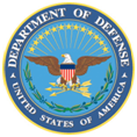
Although the Department of Defense does not have a role in directly managing horses and burros, the DOD does work with BLM personnel to deal with horses and burros that are on DOD lands, like the U.S. Air Force (USAF) Nellis Air Force Base Range in Nevada. In 1962, USAF and BLM personnel worked together to create the Nevada Wild Horse Range (NWHR) on the Nellis Air Force Range, giving BLM the responsibility of managing it. After the Wild Horse and Burro Act was passed in 1971, BLM was given the responsibility of conducting annual censuses of the horses on the NWHR. The horses reached a peak population of approximately 10,000 on this land in 1993. In 1989, the Nevada Wild Horse Range Herd Management Plan established an AML of 2,000 horses on the NWHR to be maintained by the BLM through horse gathers conducted cooperatively with the USAF.
